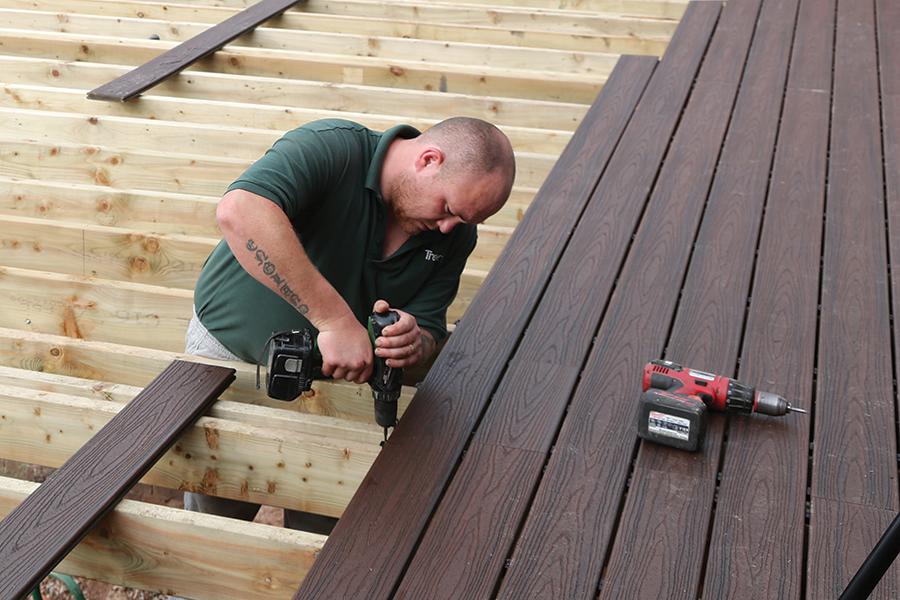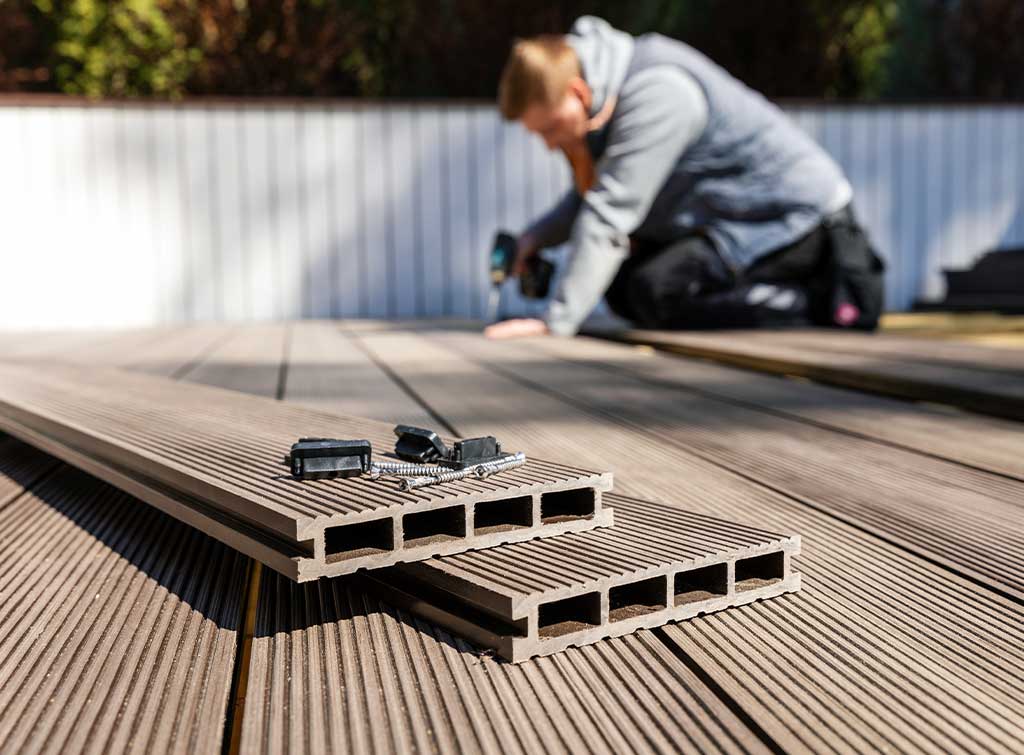Find peace of mind by hiring a certified deck installer Austin who knows the local building codes.
Find peace of mind by hiring a certified deck installer Austin who knows the local building codes.
Blog Article
How to Select the Right Products for Your Deck Setup Job
Picking the suitable materials for your deck installment job can appear complicated. The key is to stabilize your spending plan, layout choices, and lifestyle needs to produce a deck that will boost your outdoor area for years to come.
Recognizing the Different Types of Deck Products
When embarking on a deck installment task, the selection of materials ends up being an essential choice. Compound products, on the various other hand, are a blend of wood and plastic, offering sturdiness and resistance to weather aspects. By understanding these distinctions, home owners can make an extra informed decision on the most appropriate deck material for their certain demands.
Assessing the Durability and Maintenance Demands of Deck Materials
Evaluating the longevity and upkeep needs of deck products is a critical action in deck installment. Resilience involves the material's capacity to hold up against extreme climate problems, wear and tear, and its long life. Cedar and redwood are naturally resistant to rot and bugs, making them resilient selections. On the various other hand, pressure-treated timber, while resilient, might require more upkeep because of its susceptibility to splitting and warping.
Understanding maintenance needs is just as important. Some materials require normal sealing or staining to preserve their appearance and stand up to wetness damage, while others, like composite decking, demand less maintenance. By examining these aspects, one can select one of the most ideal decking material, guaranteeing an equilibrium between toughness, upkeep requirements, and aesthetic charm.
Cost Evaluation: Contrasting Wood and Composite Decking
Although price may originally feel like a second concern, it is a significant aspect when comparing wood and composite decking. Timber, generally a cheaper option, has a lower in advance expense. However, gradually, upkeep expenses can build up, potentially making timber much more expensive over time. These maintenance prices might include discoloration, securing, or replacing harmed boards. On the various other hand, composite decking, while costlier at first, needs much less maintenance, possibly minimizing lasting prices. It's important to keep in mind that composite outdoor decking isn't invulnerable to put on and tear, and substitute prices can be high. Possible deck proprietors should consider their budget plan and willingness to maintain their decks when making a decision in between wood and composite decking.
Aesthetics and Layout Flexibility of Decking Materials
While expense is an essential consideration, the visual appeal and style versatility of decking products also play a significant duty in the decision-making procedure. Various materials use differing levels of visual charm. Natural wood decking provides a timeless, classic look, while composite materials provide a vast array of colors and appearances to match varied preferences and styles. Similarly, style adaptability describes the capability to shape and control the decking product to meet particular design requirements. Wood, as an example, supplies high design adaptability because of its ease of reducing and shaping. Compound materials, while much less flexible in design, are still adaptable enough for the majority of deck styles. These elements, consequently, are important factors in the option of decking product.
Ecological Impact of Decking Products
When choosing outdoor decking materials, one need to think about not just aesthetics and sturdiness, but also the environmental influence. It is essential to evaluate the sustainability of materials and check out recycled outdoor decking choices. Comprehending the possible effect on neighborhood ecosystems will make certain a much more eco accountable selection.
Assessing Product Sustainability
In the world this hyperlink of deck building and construction, analyzing product sustainability is a crucial action. Composite outdoor decking products typically incorporate timber and plastic, minimizing the need for brand-new hardwood yet enhancing reliance on fossil fuels - deck installation. Thus, the choice of decking products need to stabilize capability, visual appeals, cost, and sustainability to make sure a responsible and resilient setup.
Recycled Decking Alternatives

Compound decking is particularly popular due to its longevity and convenience of maintenance. It's immune to rot, insects, and fading, making it a long-lasting alternative. Recycled plastic outdoor decking, on the other hand, is extremely resistant and requires marginal upkeep. While these materials may carry a greater preliminary price, their longevity and reduced environmental effect make them a sensible financial investment for the eco-conscious home owner.

Effect on Local Environments
While the benefits of utilizing recycled materials for outdoor decking can not be overemphasized, it's similarly essential to think about the more comprehensive ecological effects of these published here options. Correct disposal of old outdoor decking is vital to lessening land fill waste. Basically, an eco-conscious deck project demands mindful material selection, sustainable sourcing, and responsible disposal.
Making Your Last Choice: Tips for Picking the most effective Deck Materials
As the write-up changes right into the subtopic of "Making Your Decision: Tips for Choosing the most effective Deck Products", it is critical to comprehend the variety of deck materials offered. Striking a balance between longevity and looks is important in this choice procedure. The complying with discussion will assist readers in making an enlightened option based on these key factors to consider.
Comprehending Various Deck Products
The task of choosing the appropriate materials for your deck installment can appear daunting because of the vast variety of options offered. Understanding the various products can simplify this process. Wood is a prominent option, offering a timeless aesthetic and cost. Types of wood made use of include pressure-treated lumber, cedar, and redwood. Composite products, made from a mix of timber and plastic, are low-maintenance and immune to rot and insects. Plastic or PVC decks are a lot more resilient and require much less maintenance than composite materials, but they can look less natural. Aluminum decks are strong, light-weight, and resistant to rot, however they are likewise the most costly option. Each product has its own benefits and downsides, making it essential to consider your specific needs before making a decision.
Longevity vs. Appearances Balance
Balancing durability with appearances can be a challenge when picking deck products. The choice usually steams down to personal preferences and the deck's intended usage. High-traffic areas may necessitate resilient products like composite decking, which holds up against damage but may lack the natural appeal of timber. On the other hand, wood supplies an ageless charm and heat that artificial materials struggle to reproduce. It calls for a lot more upkeep and might not last as long. House owners require to strike view a balance, thinking about both the deck's useful demands and their aesthetic choices. By doing so, they can ensure their deck continues to be a useful and eye-catching outdoor space for many years ahead.
Final thought
In verdict, selecting the ideal products for your deck installment job requires careful consideration of factors such as sturdiness, maintenance, cost, looks, and ecological influence. Whether you choose for typical wood or composite products, your choice needs to line up with your budget plan, style choices, and way of life. Eventually, the most effective outdoor decking material is one that improves your exterior room and gives satisfaction for years to find.
Report this page